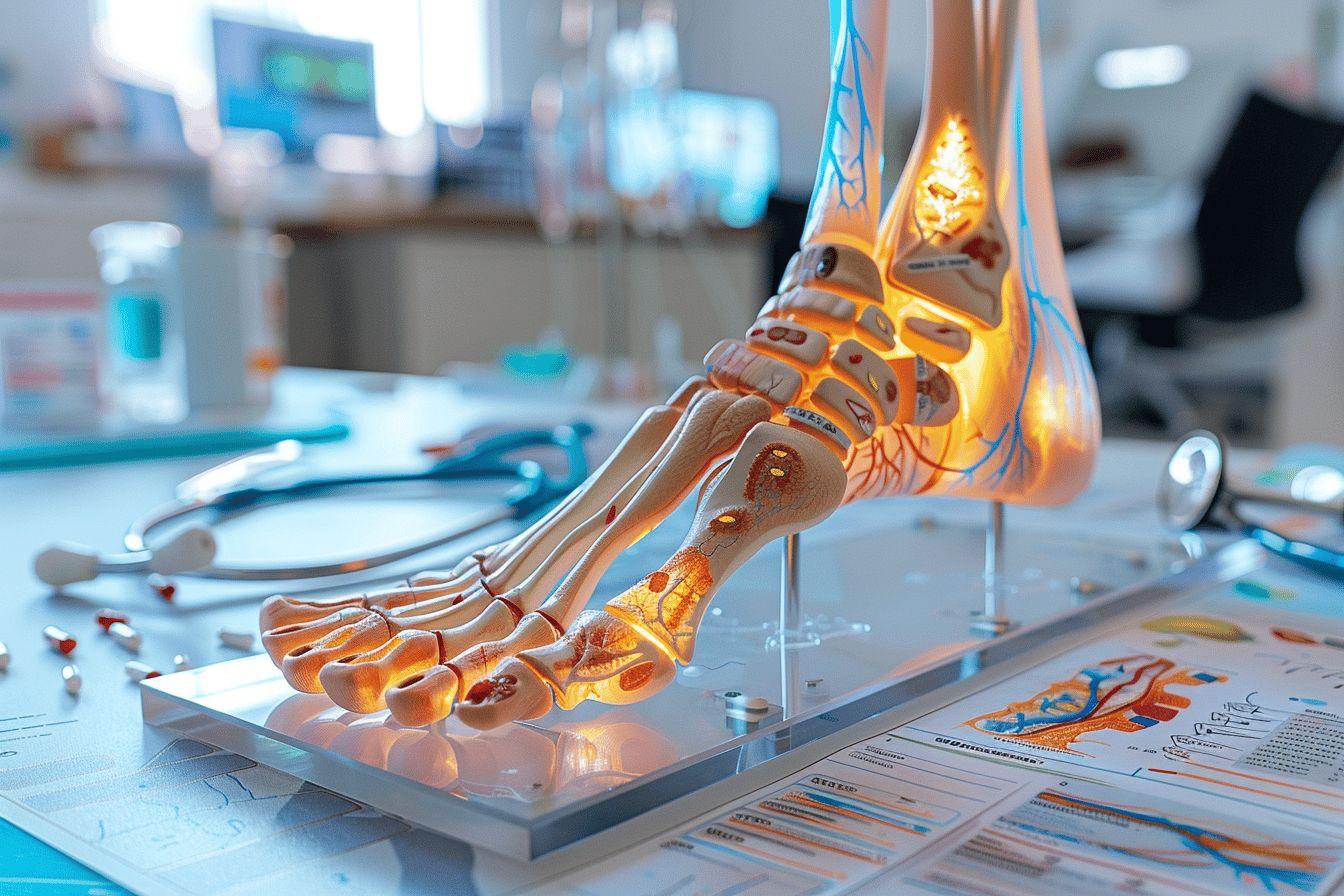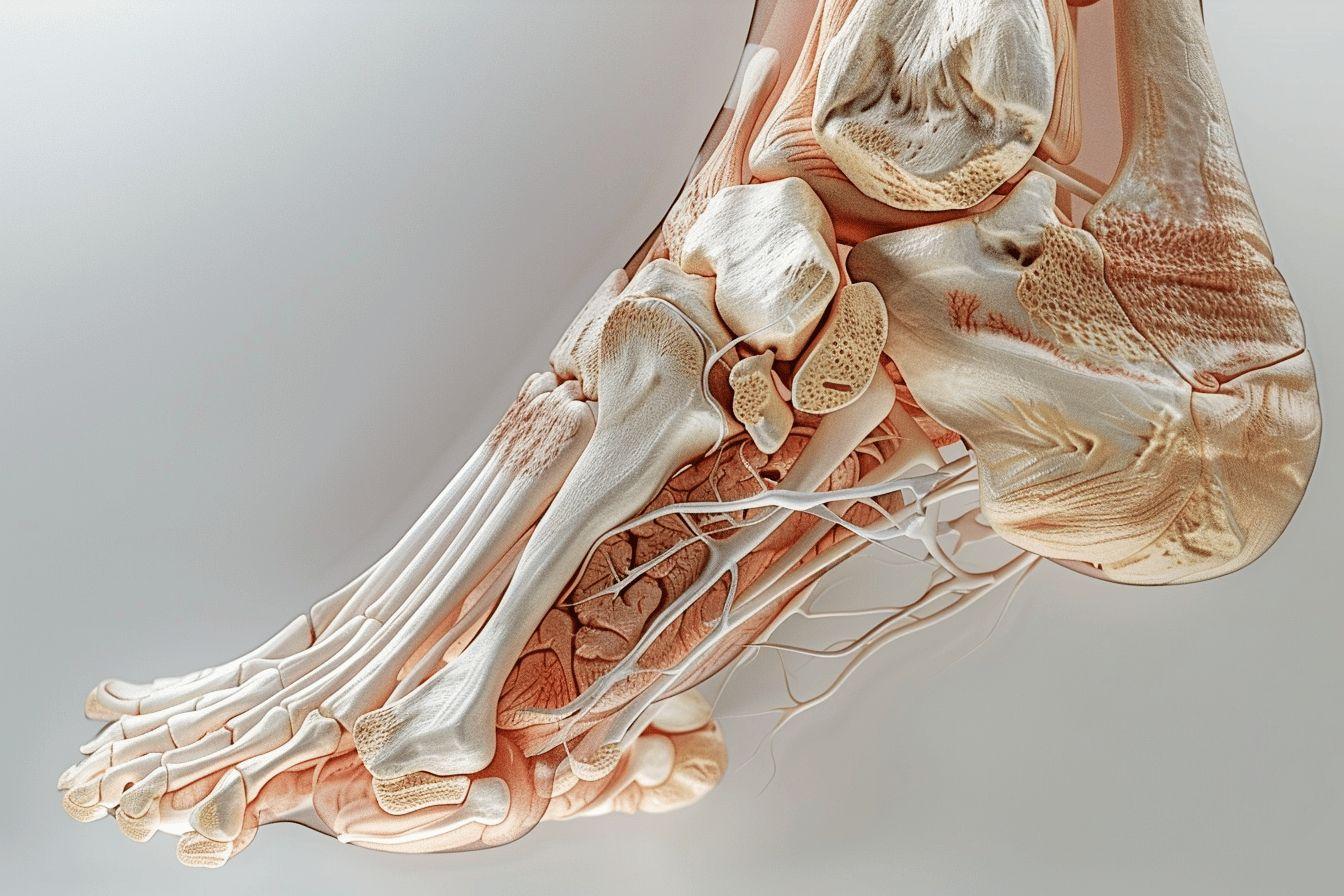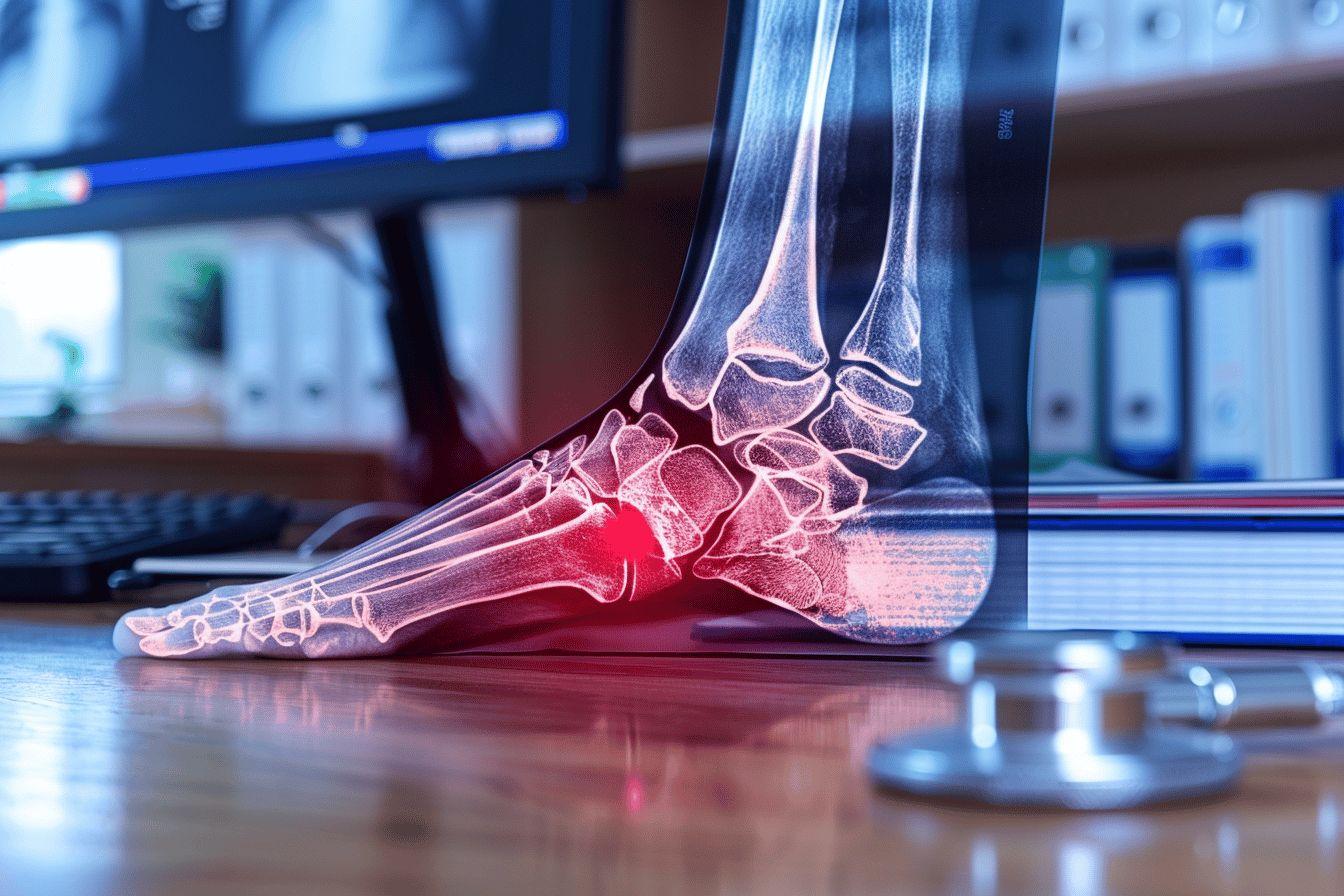Foot conditions can affect our mobility and quality of life. Understanding these conditions is crucial for maintaining foot health.
- Main pathologies: hallux valgus, plantar fasciitis, fungal infections, corns and calluses, heel spurs
- Various symptoms: pain, deformities, inflammation, itching
- Treatments: conservative approaches, physical therapies, medications, surgery as a last resort
- Essential prevention: suitable footwear, rigorous hygiene, strengthening exercises
- Medical Advances: shock waves, stem cells, 3D printing for custom orthotics
The Foot diseases can affect our mobility and quality of life. Understanding these conditions, their causes, and available treatments is essential for maintaining the health of our feet. Let's examine the main foot pathologies, their symptoms, and ways to prevent or treat them.
Common foot conditions and their causes
Our feet bear our weight daily and are constantly under stress. This stress makes them vulnerable to various pathologies. Among the most common are:
- Hallux valgus (bunion)
- Plantar fasciitis
- Mycoses
- Corns and Calluses
- Heel Spur
TheHallux Valgus, commonly referred to as a "bunion," is characterized by an outward deviation of the big toe. This progressive deformity can be hereditary or caused by wearing unsuitable shoes. Women are more frequently affected, particularly due to wearing high heels.
Plantar fasciitis is an inflammation of the fascia, the band of tissue that connects the heel to the toes. It causes intense pain, particularly when standing up. There are many causes: being overweight, running intensively, or wearing shoes without adequate support. How to cure plantar fasciitis quickly is a common question among sufferers.
The Mycoses are fungal infections that thrive in warm, humid environments. Swimming pools, locker rooms, and poorly ventilated shoes are prime breeding grounds for them. They manifest as itching and peeling skin between the toes.

Signs and Symptoms of Podiatric Disorders
Recognizing the symptoms of foot diseases is crucial for early diagnosis and effective treatment. Here's a summary table of the main signs to look out for:
| Illness | Main Symptoms |
|---|---|
| Hallux Valgus | Hump on the side Big toe pain, redness |
| Plantar fasciitis | Pain under the heel, morning stiffness |
| Thrush | Itching, peeling skin, unpleasant odor |
| Corns and calluses | Areas of thickened skin, tenderness to pressure |
| Heel spur | Sharp pain under the heel, like stepping on a nail |
A heel spur is a bony growth that forms under the heel. It causes severe pain, often described as the sensation of stepping on a nail. This condition is frequently associated with plantar fasciitis. How to treat a heel spur is a major concern for those who suffer from it.
The Corns and calluses are thickenings of the skin that form in response to repeated friction or pressure. Although less serious than other conditions, they can cause significant discomfort when walking or wearing shoes.
Treatments and Therapeutic Approaches
The management of foot conditions varies depending on the condition and its severity. Treatments can range from simple conservative measures to surgical interventions. Here are the main therapeutic approaches:
Conservative Treatments: These are often the first line of defense. For hallux valgus, orthotics or toe separators can relieve pain and slow progression. Plantar fasciitis benefits from specific stretches, massage, and orthotic insoles.
Physical Therapies: Physical therapy plays a crucial role in the treatment of many foot conditions. Strengthening and stretching exercises, combined with manual techniques, can improve foot function and reduce pain.
Medication Treatments: Nonsteroidal anti-inflammatory drugs (NSAIDs) are commonly prescribed to relieve pain and inflammation. For fungal infections, topical or oral antifungals are used. In some cases, corticosteroid injections may be considered for severe pain.
Surgery: Reserved for the most severe cases or those resistant to conservative treatments. Advanced hallux valgus may require surgery to correct the bone deformity. Chronic plantar fasciitis may sometimes require surgical release of the fascia.
Prevention and Daily Foot Care
Prevention is essential to maintaining the health of our feet. Here are some practical tips:
- Wear shoes that are appropriate for your body shape and activity.
- Practice rigorous hygiene, drying thoroughly between your toes after showering.
- Moisturize your feet regularly to prevent cracks.
- Avoid walking barefoot in damp public places.
- Do foot strengthening and stretching exercises.
The choice of shoes is essential. Choose models that offer good support and enough room for the toes. For athletes, it is recommended to regularly replace your running shoes to ensure optimal cushioning.
A regular foot self-examination allows for early detection of any changes or abnormalities. Pay attention to the appearance of redness, unusual calluses, or changes in the shape of your feet. If in doubt, do not hesitate to consult a podiatrist.
People with diabetes must be extra vigilant. Diabetes can affect blood circulation and sensitivity in the feet, increasing the risk of complications. Regular podiatric follow-up is strongly recommended for these patients.
Medical Advances and Future Perspectives
Podiatry constantly benefits from medical advances. New therapeutic approaches are emerging, offering promising prospects for the treatment of foot diseases.
Shockwave therapies are gaining popularity for treating plantar fasciitis and heel spurs. This non-invasive technique stimulates tissue regeneration and reduces inflammation. The results are encouraging, with significant improvement in many patients.
The use of stem cells is being researched for foot tissue regeneration. This approach could modernize the treatment of certain chronic pathologies by promoting the natural repair of damaged tissues.
3D printing technologies now make it possible to create custom orthoses and prostheses with unparalleled precision. This personalization significantly improves the comfort and effectiveness of orthopedic devices.
Finally, artificial intelligence is being introduced into podiatric diagnosis. Algorithms analyze gait patterns and plantar pressure distribution, helping practitioners detect certain pathologies early.
By better understanding foot diseases, their causes, and available treatments, we can take preventive action and seek appropriate care at the first signs. The health of our feet is essential to our overall well-being and deserves our full attention.





Leave a comment
This site is protected by hCaptcha and the hCaptcha Privacy Policy and Terms of Service apply.